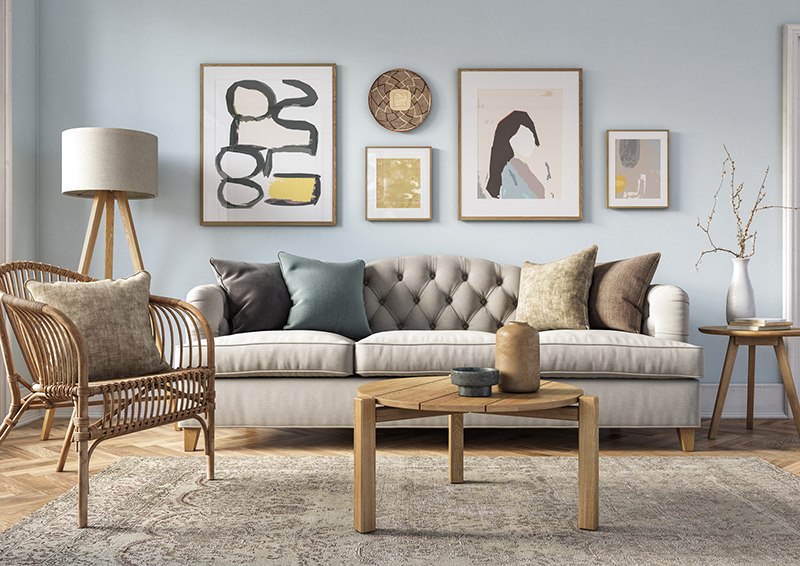
When most people think of art, it’s usually within the confines of a curated gallery or a world-renowned museum. But that is a narrow view of when and where art should be experienced.
The influential 20th century photographer Paul Strand explained it best: “The artist’s world is limitless. It can be found anywhere, far from where he lives or a few feet away. It is always on his doorstep.
We spend a considerable amount of our lives in spaces we’ve grown accustomed to calling “home.” And so, it should be a space that celebrates what we value and inspires us to be the best we can be
When you live in a city like West Palm Beach, FL, art is everywhere. There’s more than a few ways to incorporate it into our personal spaces and everyday lives. Whether you’re building from scratch or doing a few makeovers, below are tried and tested ideas on how to inject some finesse and pizazz into your home.
Table of Content
- DECIDE ON A THEME
- CREATE A SENSE OF INTIMACY
- ELEVATE A SPACE WITH A GALLERY WALL
- LEAN INTO BOLDER EXPRESSIONS OF ART
- MAKE USE OF PERSONAL PIECES
- DON’T EXCLUDE KIDS’ ROOMS
- TELL A STORY
- DESIGN AROUND NATURAL LIGHT
- CONTROL LIGHTING CONDITIONS
- UTILIZE BIGGER PIECES IN SMALL SPACES
- BE MINDFUL OF HOW THE SPACE MAKES YOU FEEL
- DON’T PUT TOO MUCH EMPHASIS ON MONETARY VALUE
- SEEK OUT INSPIRATION IN WEST PALM BEACH
- READY FOR ART-INSPIRED LIVING IN WEST PALM BEACH?
-
DECIDE ON A THEME
Before anything else, think about an overarching theme for your home. Having a unifying concept not only creates a pleasant everyday home experience; it also elevates the works of art and art-inspired design elements you incorporate into each space.
For those building from scratch, there’s a lot of leeway to experiment and find the right harmonizing theme. For existing homeowners, instead of doing a complete overhaul, take inspiration from the features you already love, whose styles you would like to further explore.
Once you have chosen a main theme, keep the following design guidelines in mind:
- Create focal points throughout the home. It can be as simple as a minimalist coffee table or as complex as a well-curated gallery wall. Play around with positioning, scale, colors, and texture to find the right balance.
- Find the right colors. Start with larger rooms like living rooms and family dens. It’s not unusual to implement slightly varying colors in a number of rooms, but don’t stray too far from the home’s main color palette.
- Don’t shy away from a little experimentation. There’s nothing wrong with a monochromatic approach, but if the intention is to excite and stimulate visual interest, consider getting out of your comfort zone and mixing it up.
- Apply patterns judiciously. There’s certainly a risk of overdoing patterns for a certain style. Balance dominating patterns with complementary ones to make any space look well-composed — not forced or contrived.
-
CREATE A SENSE OF INTIMACY
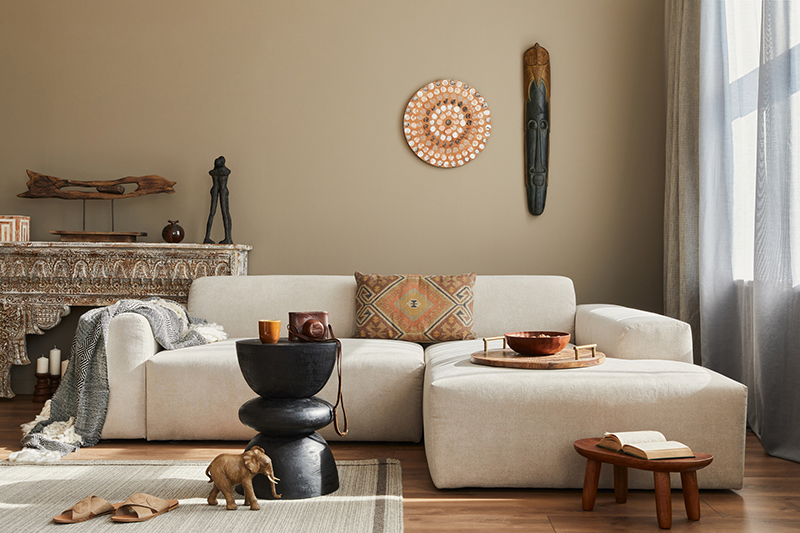
One simple yet powerful way to create depth in a room is to hang pieces at seating or eye level. This usually works best with paintings that are unframed or don’t exude formality.
That said, don’t be afraid to eschew convention. A contemporary-looking space may benefit from having a mix of framed and unframed works on the same wall, especially if you’re going for a more bohemian or eclectic feel.
-
ELEVATE A SPACE WITH A GALLERY WALL
A subdued yet still eye-catching display can have a fantastic effect on any room. Whether it’s an interplay of black and white colors or using just a single hue throughout, the key is to commit to a unifying color scheme — whatever you decide to work with will serve as the backdrop for your art.
Additionally, consider the room when selecting pieces that should go on this wall. They don’t have to be the exact same in hue and texture, but they shouldn’t be in conflict with the overall style and your chosen color. In addition, while you can get away with slightly different frame shapes, make sure the variations aren’t as pronounced as they are in an eclectic gallery wall.
-
LEAN INTO BOLDER EXPRESSIONS OF ART
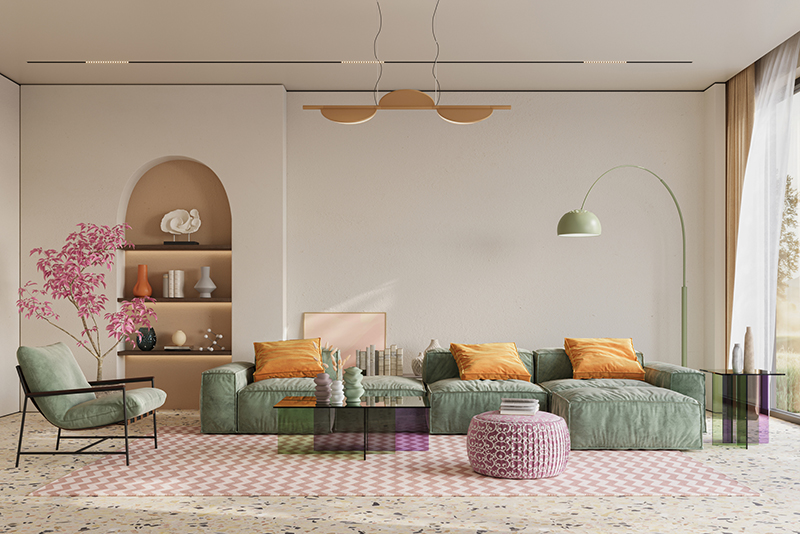
On the other hand, try having fun and exploring your inner artist. Going for elements that make an immediate statement can create an elevated feeling in a given space.
Contrary to what many might think, going bold with art doesn’t mean abandoning decency and good taste. An imposing image of a mountain range, an abstract piece open to a variety of interpretations, or unexpected shapes and elements in an otherwise neutral palette — these are just a few ways to be more daring with art.
Take it further: With multiple works of art, consider creating a gallery wall to showcase your sizable collection. This maximalist approach encourages you to be as varied as possible, especially if you don’t feel the need for each piece to be strictly in harmony. Even if you don’t have a lot of art to hang up at the moment, you always add more to this gallery wall down the line — something to look forward to every time you acquire a new piece.
-
MAKE USE OF PERSONAL PIECES
A family photo, even the ones that are a bit goofy and silly, can brighten a space better like no other source of light can. Displaying travel souvenirs can help keep memorable travel moments fresh in your mind. Mementos and framed posters can inspire you to keep pursuing your favorite hobbies.
There’s more than one way to express art. Your display doesn’t have to be limited to pieces that were made by professionals. Plus, when you have guests over, those photos and valuable collections are sure conversation starters.
-
DON’T EXCLUDE KIDS’ ROOMS
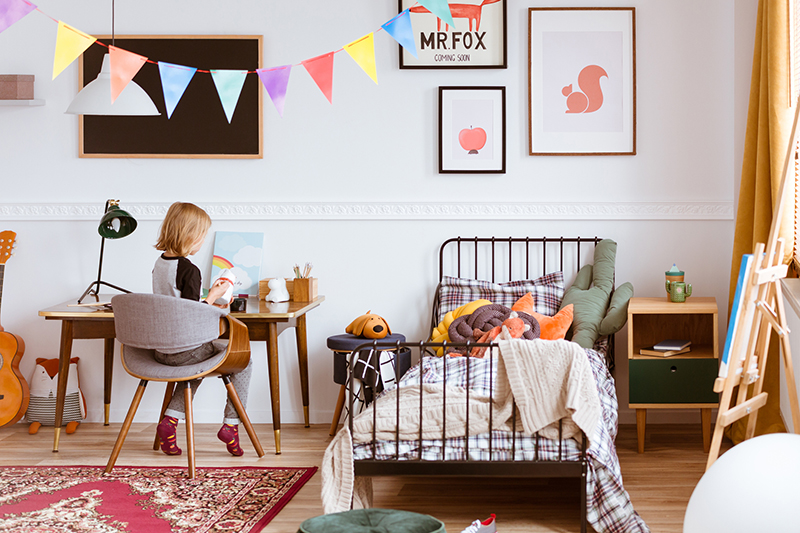
Art isn’t for the sole enjoyment of adults. For those with kids, try adding art-inspired designs in their rooms. The trick is to make it engaging. Avoid somber shades, the overly abstract, and anything that requires a basic knowledge of art concepts for it to be appreciated.
A favorite animal, photos of firsts (school day, field trip, etc.), or a beautiful landscape painting, are just a few of the many ways you can design kids’ rooms with art in mind. What’s more, these spaces offer an opportunity to play around with different styles that you may not be familiar with — giving you much-needed practice and inspiration for other areas of the home.
Design for the long-term: You probably don’t want to do a major redesign of the space in just a few years because your kid has outgrown the babyis vibe of the room. Just because you’re styling a kid’s room, doesn’t mean it should be strictly that. Add backgrounds and main colors that can work in any type of room. That way, children can grow into the room and don’t have to feel like they need to eventually move to a more “grown-up” space.
-
TELL A STORY
For personal pieces like family photos and heirlooms, consider weaving a cohesive story that reflects your identity, values, or aspirations. If you’re aiming to create an experience that no other space can replicate, what better way to do that than to design a distinct space that resonates with your life experiences? A few ideas to help you get started:
- A micro gallery of old photos juxtaposed with more recent portraits can visually illustrate where you’ve been and where you are headed
- Relevant artwork that thematically aligns with a key life moment (e.g., graduation, big promotion, wedding day) can be the finishing touch to a space.
- The right color palette can make all the difference when telling a very personal story through interior design. Whether it’s a calm blue shade or a fiery red, take into account how each hue makes you feel and whether or not it helps you tell the story you want to convey.
-
DESIGN AROUND NATURAL LIGHT
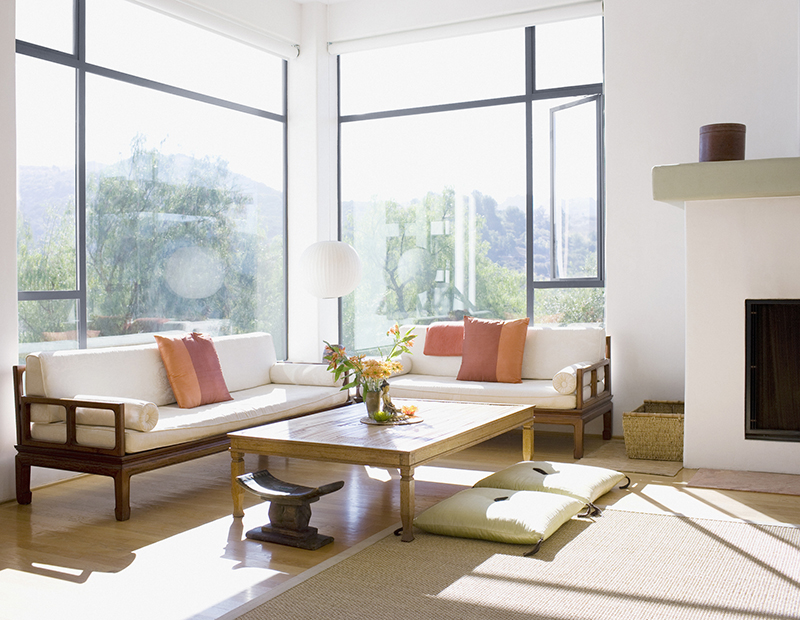
Sunlight does wonders when it comes to illuminating home interiors. The farther you are from a window, the harder it is for light to work its magic. If the opportunity presents itself, consider designing your home around natural light — whether it’s new construction or a major house renovation.
The effect of natural light on art is particularly exceptional. Think of the luxurious warm glow of a Vermeer painting, where the late Dutch master makes mundane scenes transcendent. And with sunlight spilling into spaces where you display your art, you don’t have to heavily rely on artificial lighting to achieve your desired effect.
-
CONTROL LIGHTING CONDITIONS
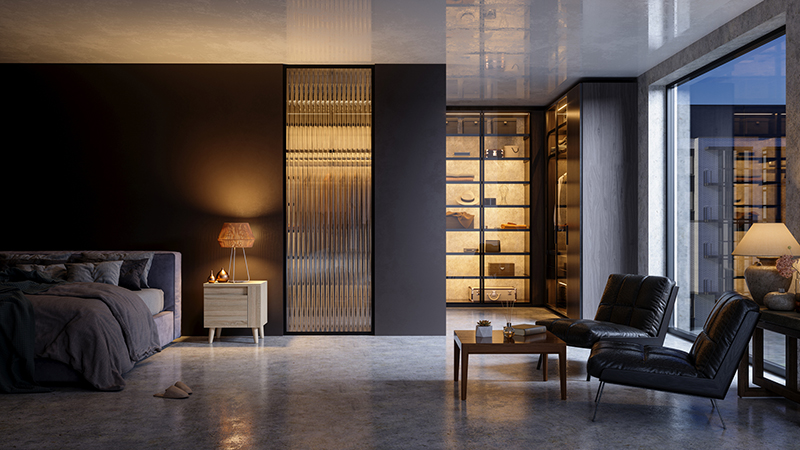
One can’t entirely dismiss artificial light. In spaces where there’s scant sunlight or for certain types of art that benefit from accents and varying color temperatures, it makes sense to implement a flexible lighting design. You’ll have quite a few options at your disposal.
- Recessed adjustable downlights offer the most inconspicuous approach to illuminating artwork. They take up little space and don’t jut out, all while giving excellent directional lighting that can subtly brighten up a room. Make sure the fixtures are evenly spaced out when you’re installing to avoid creating uncomfortable hot spots.
- Surface mounted lights are an excellent option if you want to illuminate a larger surface area of a piece. A dimmable option is best to give you some leeway to customize later on. Some may find them a bit cumbersome to install, but the key is to find a design that works well with the overall style of the room.
- Track lights are a great complement to a contemporary collection thanks to today’s sleek and modern design. But more importantly, its versatile directional lighting gives you great control when it comes to drawing attention to a specific aspect of your art. Do note that track lights are usually bulky and they stand out when mounted above.
- Picture lights sit directly above a piece and offer the desired degree of illumination (from warm and intimate to brighter and more showy) without glare or shadow. Finishes range from brass and chrome to matte black colors. One downside to this is that it may not cover the entirety of a large art work.
-
UTILIZE BIGGER PIECES IN SMALL SPACES
For rooms that are relatively smaller than other areas, consider decorating with big pieces. Installing large art in a small space can create more depth and detail. Aside from making the space appear larger than it actually is, this approach can make spaces more inviting and visually appealing. Additionally, opt for framing that goes well with the piece itself — not the space where you plan to put it in.
-
BE MINDFUL OF HOW THE SPACE MAKES YOU FEEL
-
DON’T PUT TOO MUCH EMPHASIS ON MONETARY VALUE
While the opportunity to display a famous artist’s work can greatly uplift any home, it’s not the only measure of what makes art worth collecting. One should dig deep into the emotions and concepts that the piece is trying to evoke. Do these intangibles allow you to experience the piece in a unique way?
To be clear, there’s nothing wrong with acquiring pieces made by better known artists. However, if you focus solely on this, you’ll be missing out on a large pool of talent that has yet to make it big.
Get out there and visit your neighborhood gallery. Attend local art showcases that highlight up-and-coming creators. Join a community of like-minded art lovers, where you’ll get a better sense of how today’s artists are expressing themselves.
-
SEEK OUT INSPIRATION IN WEST PALM BEACH
Living in West Palm Beach, you’re never far off from galleries and thought-provoking museums that can inspire you to design your ideal home. Below are some of the places worth visiting around town:
- The Art Deco Norton Museum of Art is where you’ll find a great mix of art from various cultures, from Europe to China. The works of artists like Childe Hassam and Stuart Davis, as well as rare items like tripod wine vessels from the Shang Dynasty, are some of the highlights. The museum was founded in 1941 by the industrialist Ralph Hubbard Norton and his wife, Elizabeth Calhoun Norton.
- The Ann Norton Sculpture Garden houses the former residence of sculptor and writer Ann Weaver Norton (Ralph Norton’s second wife). Over 100 of her original works– made up of brick, bronze, stone, and wood– are also exhibited in the museum. Additionally, the gardens contain rotating exhibitions that showcase paintings and the works of contemporary women sculptors.
- The Henry Morrison Flagler Museum was once the oil and railroad titan’s exceedingly elegant Gilded Age estate. Flagler’s private Railcar No. 91 is one of its main attractions. Going through each exhibit and lavish room, you can see a glimpse of how the Florida elite relaxed and spent their free time. Since opening to the public in 1960, nearly 100,000 tourists visit the museum each year.
- Bohemïa AG is an eclectic art gallery that’s not only prominent for its display of avant-garde pieces, but also some of the best gelato in town. Plus, the vegan sorbet is a good option for those on plant-based diets.
Art elicits a vast array of emotions. How good a particular piece is will ultimately depend on how it makes you feel. A figurative piece showcasing human figures or a classic still life painting can be interpreted in myriad ways by different people.
So before you finalize a particular display or aesthetic, pause and consider your intention. Is it supposed to make you feel hopeful? Is it meant to provoke serious thought? Or, is it something a bit more light and whimsical? At the end of the day, regardless of what others may think or recommend, you’re in the best position to find the right feeling that is appropriate for any given space.
READY FOR ART-INSPIRED LIVING IN WEST PALM BEACH?

Let us get in touch. I’m Suzanne Frisbie, a broker-associate and long-time South Florida resident. In my three decades in the industry, my team and I at Frisbie Palm Beach have helped numerous clients achieve their real estate – and art – goals in West Palm Beach.
As our client, take advantage of our network of trusted contractors in the city, from acclaimed interior designers to local purveyors of fine art and living.
Live your best art-inspired life in West Palm Beach. Give me and my team a call today at 561.373.0941 or send me an email to schedule a private consultation.